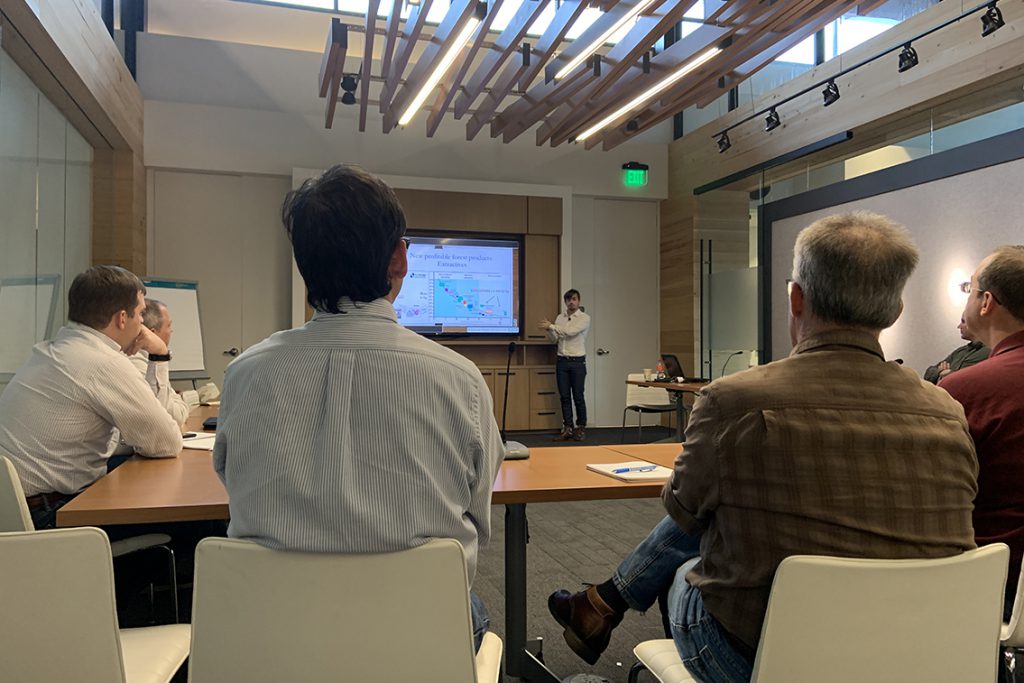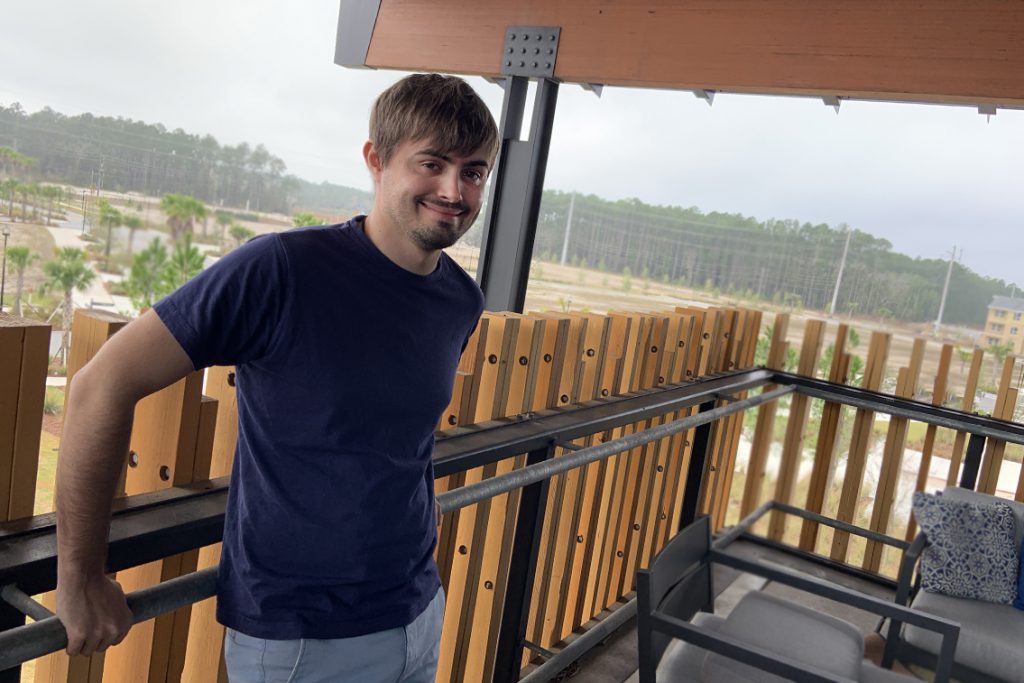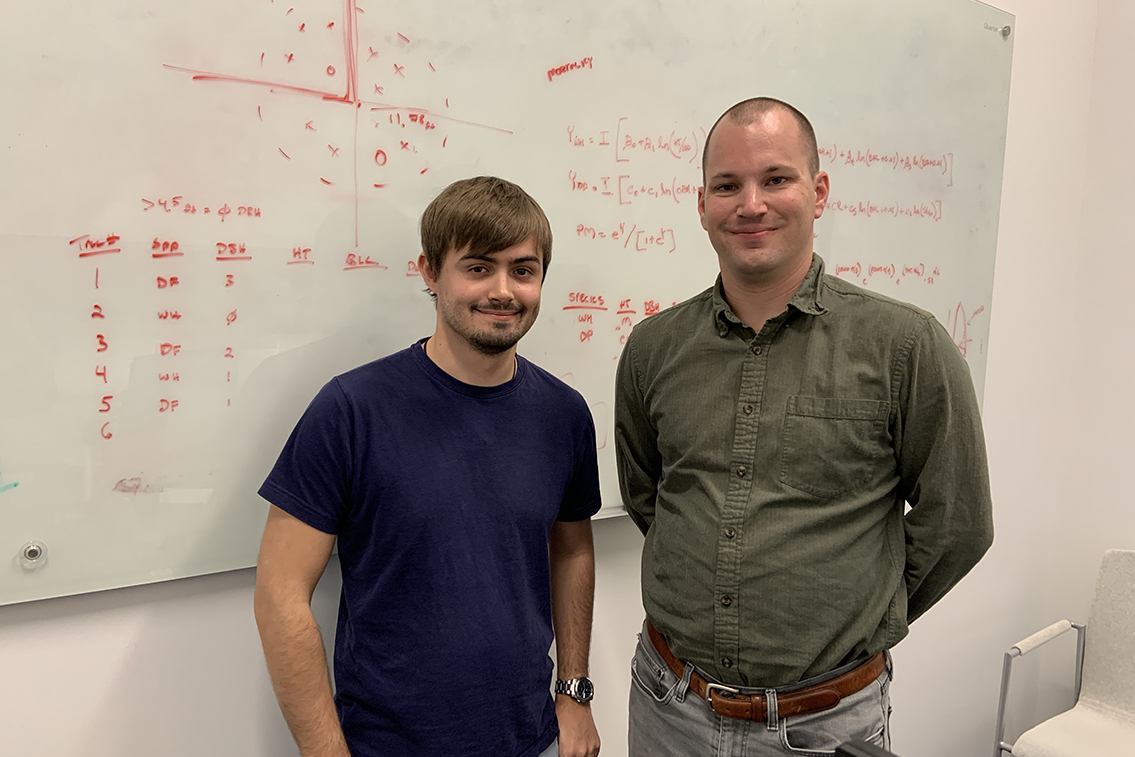A Rayonier biometrician and a French forestry engineer are collaborating on a project they hope inspires other researchers to seek insight from their peers around the globe.
WILDLIGHT, Florida—Imagine how the world might change over the next generation: Will we drive flying cars? Visit Mars? Teleport from here to there?
We don’t know what the future holds, but today’s researchers are striving to prepare the tools and materials future generations will need. At Rayonier, forward-thinking individuals like our Biometrics Projects Leader Nate Osborne challenge us to continue pushing the limits of what we know about our trees and the products they could one day be used for.
We’ve learned it’s not just the information we hold, but also who we work with that will continue moving our company—and our industry—forward. Nate (shown on the right in the photo above) recently welcomed Guillaume Salzet, a forestry modeling engineer from France, to present his research to a team of Rayonier employees. Guillaume works with the ExtraForEst program at the French National Institute for Agricultural Research (INRAe) in Nancy, France. He has been working with Nate on a project seeking a deeper understanding of the relationship between forest growth and wood quality.

“Before we create industries, we model whether they will be sustainable,” Guillaume explains. His research with the program is advancing a better way to predict the chemical makeup of wood, with the hope of being able to maximize the concentration of certain chemicals needed for high-end makeups and pharmaceutical products. Surprisingly, what’s considered one of the least valuable trees for typical wood products is one of the most valuable for Guillaume’s research: he found trees with knotty wood have the highest concentration of the desired chemicals.
“This could make use of a tree that once was not considered very valuable,” says Guillaume, who is also collaborating with forestry researchers at the University of Georgia to compare findings and research methods during his visit to the U.S.
A hope for more trans-continental research partnerships
Neither Guillaume nor Nate have heard of trans-continental research partnerships like theirs in the forestry industry, but they hope to see more of them in the future.
“The research we’re doing in North America isn’t the only research out there,” says Nate, who, himself, studied in Scandinavia, Scotland and France to broaden his perspective during graduate school. “There’s a whole other space in Europe that’s really siloed off. We can gain a lot more intellectually and business-wise by these kinds of collaborations.”
Connected through a common mentor
Nate and Guillaume met through the INRAe professor who mentored Nate in France, Francis Colin. It was Francis who first introduced Nate to the concept of using a medical CT scanner to gain a deeper understanding of wood properties, which became critical to the research Nate used in his own doctoral dissertation at Oregon State University. (Although, a bit less glamorous than the dedicated scanner in Francis’s research lab, Nate used the scanner at a nearby vet clinic between the clinic’s scans of sick pets and zoo animals.)
Guillaume, visiting the U.S. for a month, included several tours of Rayonier’s forests and meetings with Rayonier researchers in his visit. He was able to share firsthand experiences his American colleagues could use in the field, while they offered him a forestry experience from the perspective of a company whose work must be aligned with its standards for sustainability as well as profitability.
“It was very interesting to have another view with this scale of a company and see the different thinking,” Guillaume says. “It’s been a pleasure to be here and meet people and discover different aspects of forestry.”

Small town forests impacted by global markets
With our forests growing in quiet rural towns for decades and then being harvested by small, often family-owned logging contracting companies, it can be easy to see forestry as a strictly local business. But the market for timber is a worldwide industry, and that makes it critical to understand what’s happening in forests worldwide.
“How does the industry use radiata pine in New Zealand? How is the spruce beetle epidemic influencing forest management in Northern France? Factors like these can impact the value for timber across North America,” Nate explains. “It’s a global market, and our research needs to help us solve global challenges to be sustainable today, as well as preparing us for opportunities in the future.”






Leave a Comment